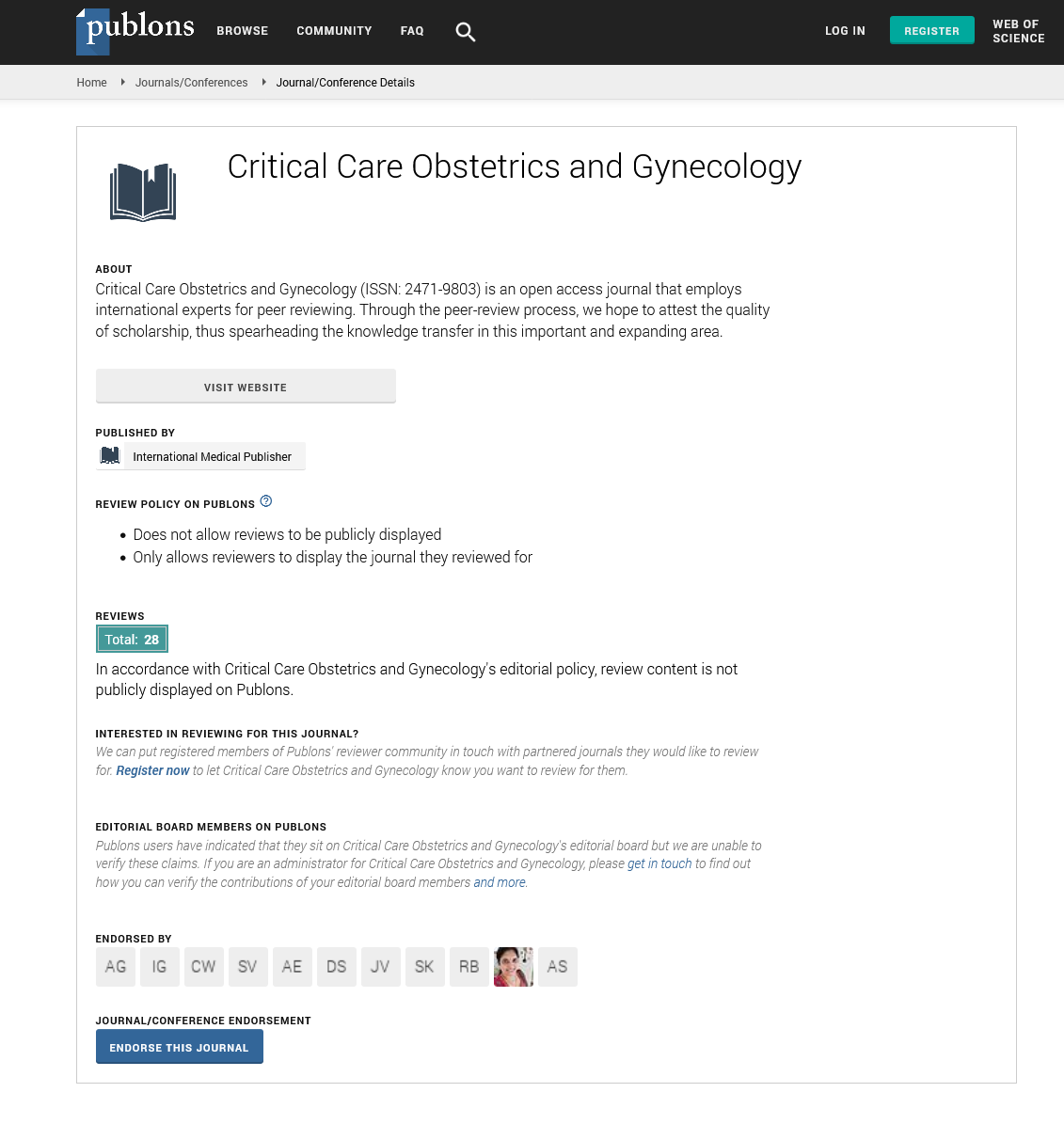Abstract
Frequency of Tubal Ectopic Pregnancy and Mode of Management at Al-Thawra General Modern Hospital
Objective: To determine the frequency of tubal ectopic pregnancy and to evaluate the epidemiological and common predisposing factors in cases study. To determine the mode of management of tubal ectopic pregnancy.
Study Design: This is a prospective descriptive analytic study carried out from 1 January 2013 until 31 December 2013 at obstetric and gynecological unit at Al-Thawra Hospital in Sana’a, Yemen.
Results: Total number of deliveries from the 1st of January 2013 till the 31st of December 2013, were a total of 9330 deliveries, out of which 103 women had tubal ectopic pregnancy creating an incidence of 1.1% of the total deliveries with a ratio of 11/1000 live births. The mean age of the patients was 27.8 yrs and ranged between 17-40 years of age. It was most common in multipara with a percentage of 78.67 54.4% of women were Qat chewers and smokers. It was more commonly found in women of low economic status with 90.3%. 30.1% of women with it had a history of abortion, 70.9% had a history of pelvic inflammatory disease, 20.8% had a history of an abdominopelvic surgery, 11.7% were using intrauterine device and 5.8% were using progesterone-only pills, 1.9% had a history of tubal sterilization, 88.3% presented with abdominal pain, 72.8% gave a history of amenorrhea, 63.1% presented with vaginal bleeding, 79.6% presented with hemodynamic instability, 86.5% were treated surgically, and 14.5% were treated medically using Methotrexate. The surgical treatment was salpingectomy in 90.4%, and 6.6% was salpingostomy. There were no maternal mortalities.
Conclusion: The most common risk factors found in patients with tubal ectopic pregnancy were previous abortions and PID. The majority of the patients were treated surgically as they were lately presented in a state of hemodynamic instability. 14.5% were treated medically and this proved to be very effective.
Author(s):
Belquis AJ and Dikrayat H
Abstract | Full-Text | PDF
Share this

Google scholar citation report
Citations : 148
Critical Care Obstetrics and Gynecology received 148 citations as per google scholar report
Critical Care Obstetrics and Gynecology peer review process verified at publons
Abstracted/Indexed in
- Google Scholar
- China National Knowledge Infrastructure (CNKI)
- WorldCat
- Publons
- Geneva Foundation for Medical Education and Research
- Secret Search Engine Labs
Open Access Journals
- Aquaculture & Veterinary Science
- Chemistry & Chemical Sciences
- Clinical Sciences
- Engineering
- General Science
- Genetics & Molecular Biology
- Health Care & Nursing
- Immunology & Microbiology
- Materials Science
- Mathematics & Physics
- Medical Sciences
- Neurology & Psychiatry
- Oncology & Cancer Science
- Pharmaceutical Sciences


